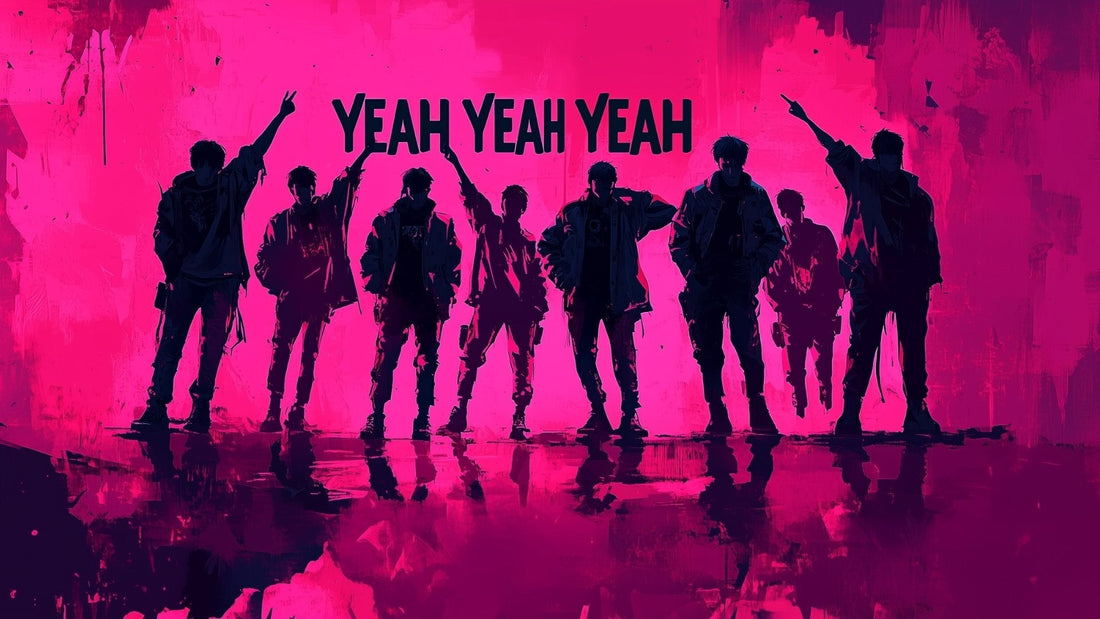
J-Pop vs. K-Pop: A Colorful Look at Their Styles and Cultures
Introduction
Have you ever found yourself humming a tune from your favorite anime or doing that viral dance move made famous by a Korean boy band? Pop music from Japan and Korea continues to gain fans worldwide with its energetic performances, out-of-this-world fashion, and lively community of supporters. J-Pop and K-Pop might seem similar at a glance, but they each carry their own flair. Today, we're comparing these two forms of pop and celebrating what makes them so special.
Origins and Early Influences
Japanese pop music, often called J-Pop, started blossoming in the late '80s and early '90s. Idol culture played a big role, with girl groups and boy bands shaping trends in fashion and dance. Morning Musume, for instance, took off in the late '90s with peppy numbers that combined pop-rock elements with cute choreography. Anime theme songs also boosted recognition, reaching folks who tuned into shows like Sailor Moon or Pokémon.
Korean pop, known as K-Pop, began picking up speed around the late '90s, though its popularity soared in the early 2000s. Acts like BoA and TVXQ introduced polished vocals, dynamic choreography, and a multicultural vibe. Some artists sang in both Korean and Japanese, crossing language barriers. By the time groups like Girls’ Generation, BIGBANG, and BTS burst onto the scene, K-Pop was already on its way to global fame.
Sounds and Styles
Music in J-Pop often features bright melodies, a playful spirit, and a sense of variety that can switch between sweet ballads and upbeat tracks. A typical J-Pop song might include a catchy chorus fit for an anime opening or a gentle lullaby that tugs at the heart. Visual kei, a subculture in Japan, also shaped the look and sound of some artists, blending rock with theatrical costumes.
K-Pop is sometimes associated with high-energy dance tracks, bold rap segments, and strong vocal lines. Groups like BLACKPINK merge electronic pop with hip-hop, while EXO combines R&B with bright melodies. Many K-Pop acts produce entire albums with themed concepts, tying their music videos, performances, and outfits together.
A big difference lies in language presentation. J-Pop artists frequently focus on Japanese lyrics for their home audience, occasionally adding English lines. K-Pop groups often include more English lyrics to appeal to a global crowd. Both approaches share a desire to create fun and unforgettable tunes.
Choreography and Performance
J-Pop performances can be playful and sometimes less polished than K-Pop, but that laid-back spirit is part of its charm. Idols connect with fans through smaller events, handshakes, and variety shows that showcase their personalities. Fans love these real interactions and come to see idols as approachable stars.
K-Pop is famous for complex dance routines. Many groups rehearse for years before debuting, so their performance quality is top-notch. K-Pop agencies also produce large-scale music videos with cinematic flair. This level of preparation and production resonates with audiences craving exciting visuals and synchronized dance moves.
Fashion and Aesthetics
J-Pop fashion can be quirky, full of bright colors, and sometimes inspired by anime or street styles like Harajuku. Think pastel wigs, layered skirts, and creative accessories. J-Pop album art often draws on manga and anime influences, making it instantly recognizable.
K-Pop leans on trends in streetwear, high fashion, and edgy concepts. Bold statement pieces, vivid hair colors, and dramatic makeup looks are common. Each comeback—an album or single release—often unveils a fresh style. This cycle of reinvention keeps fans on their toes, eager to see what’s next.
Fan Culture and Global Reach
J-Pop fandom often stays centered in Japan, though it’s still popular in other countries. Anime conventions serve as a hub for J-Pop enthusiasts who enjoy meeting fellow fans and discovering new releases.
K-Pop fandom is known for a global outlook. Fans, often called stans, connect through social media to support their favorite groups. They organize streaming events, create dance covers, and even learn Korean lyrics. K-Pop’s worldwide reach has led to sold-out stadium tours in Europe, North America, and beyond.
Why Compare Them?
Checking out both J-Pop and K-Pop reveals the impact that cultural identity, technology, and storytelling have on music. We see how Japan leans on its passion for anime, manga, and idol tradition, while Korea pushes global collaborations and inventive marketing strategies. Each scene has something unique to offer. Whether you’re drawn to the sweet sounds of Japanese idol groups or the slick moves of Korean dance crews, there's a shared energy that makes Asian pop so fun to explore.
Conclusion
J-Pop and K-Pop keep millions of fans excited for each new release or concert. Although they reflect different cultural backgrounds and creative choices, there's a constant effort to connect with listeners through upbeat songs, expressive visuals, and a sense of unity. If you love pop, fashion, and catchy hooks, diving into both styles will give you plenty to enjoy. Why not give a new J-Pop or K-Pop track a listen right now and see which side of the pop universe sparks your imagination?
Ready to dive into your pop fandom? Keep an eye out for our brand-new J-Pop and K-Pop-inspired items arriving in the coming days, and add a bold burst of culture to your everyday style!

